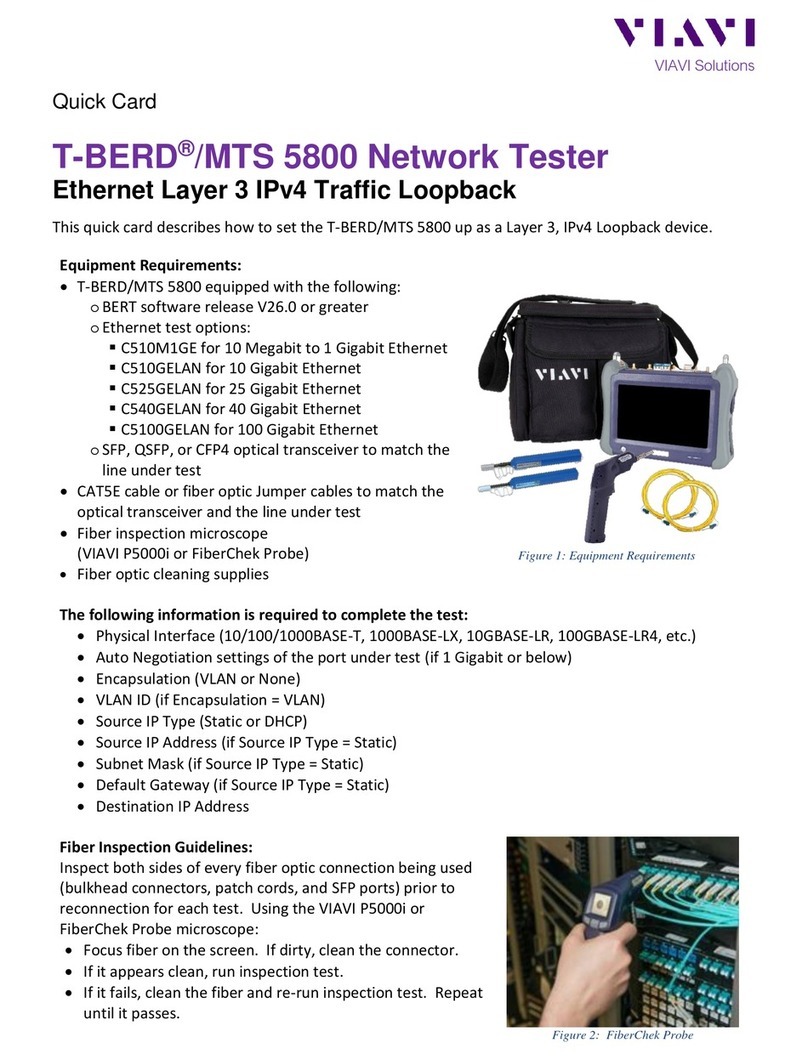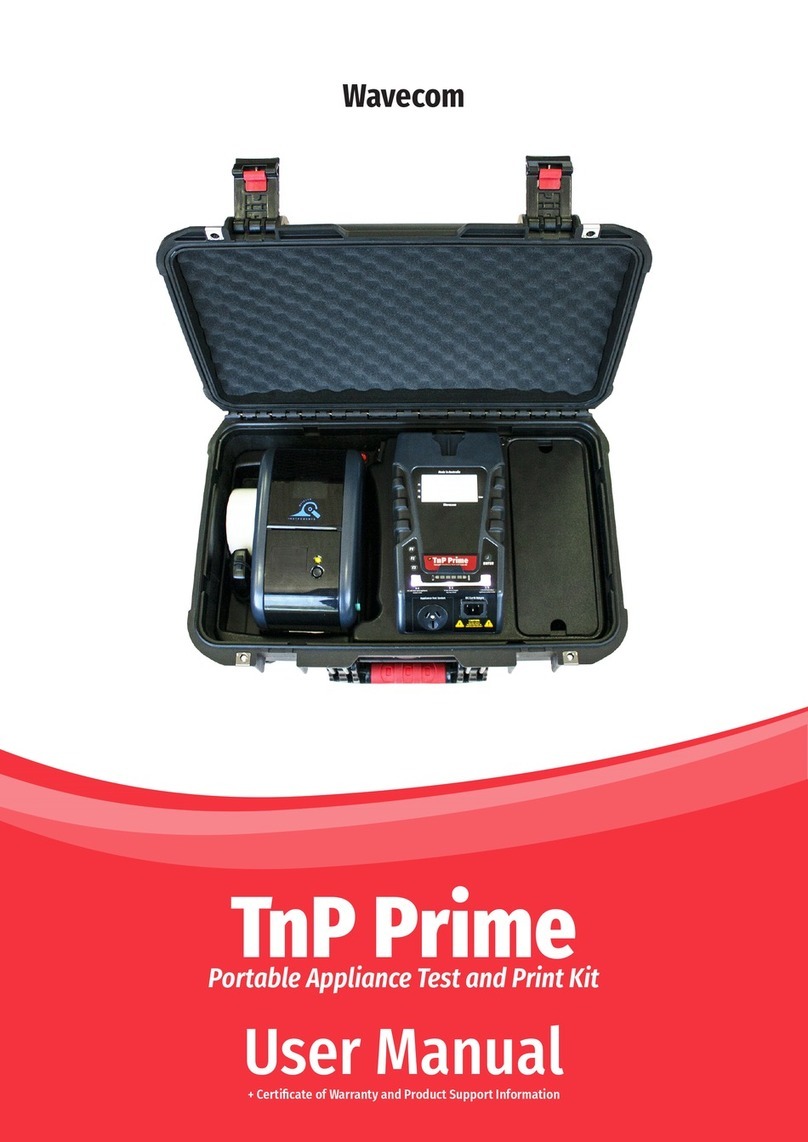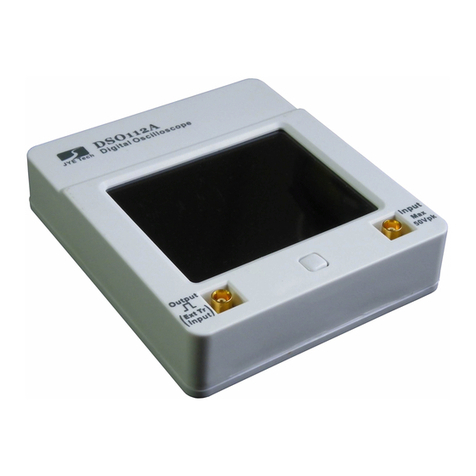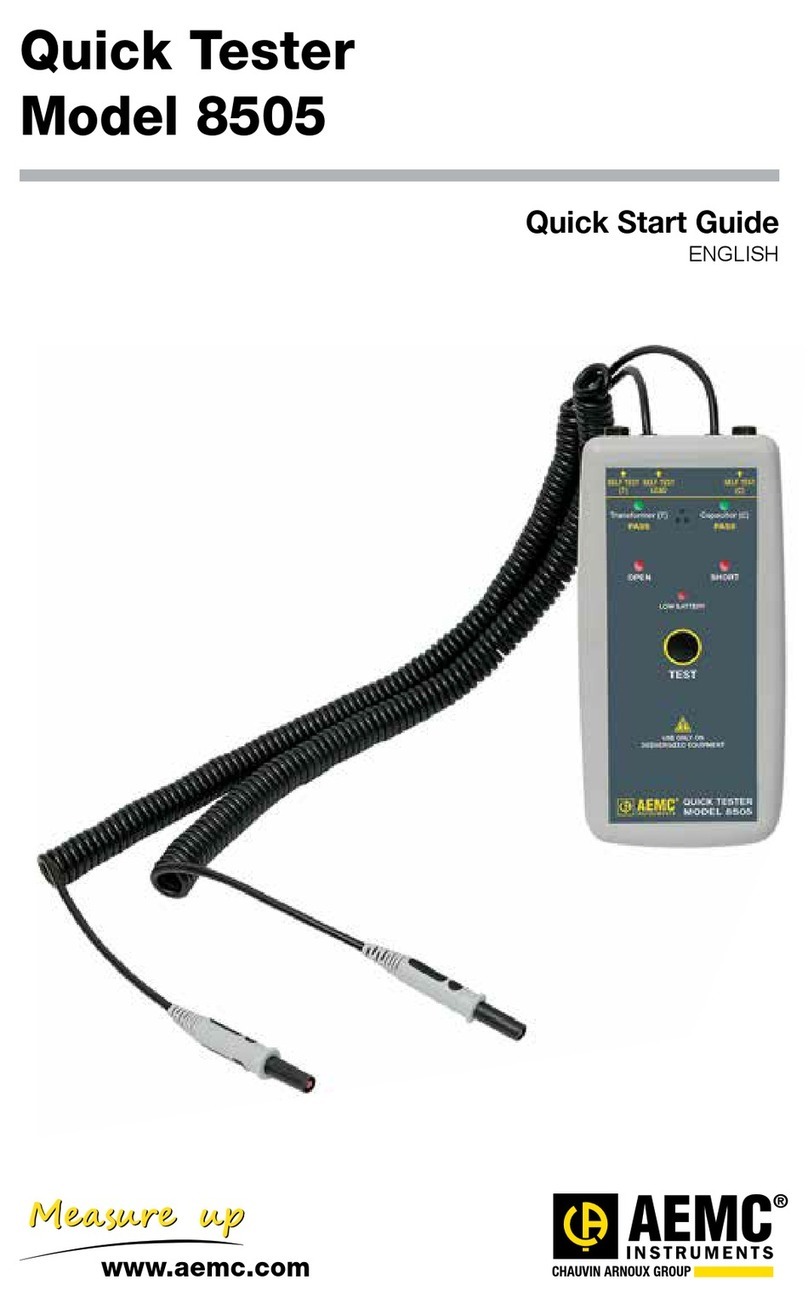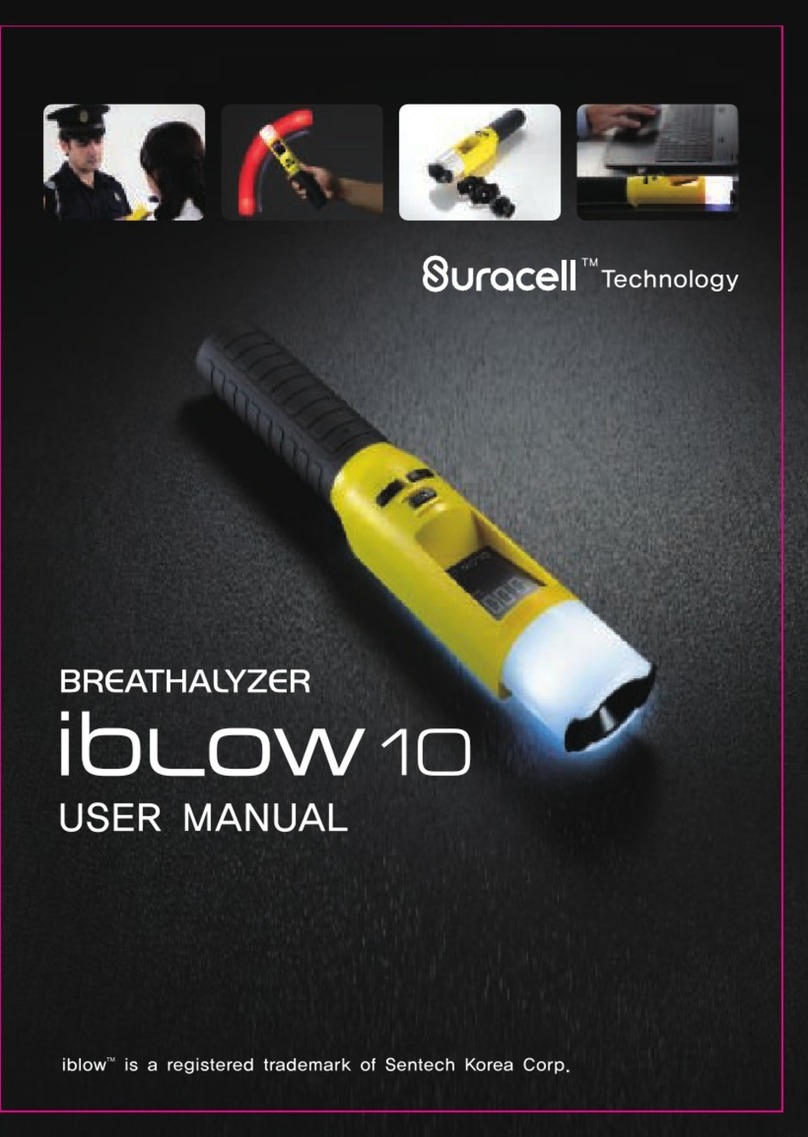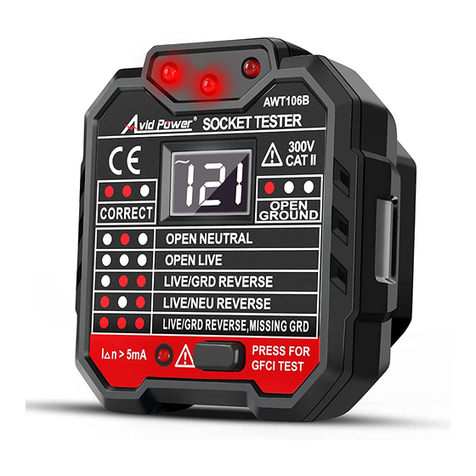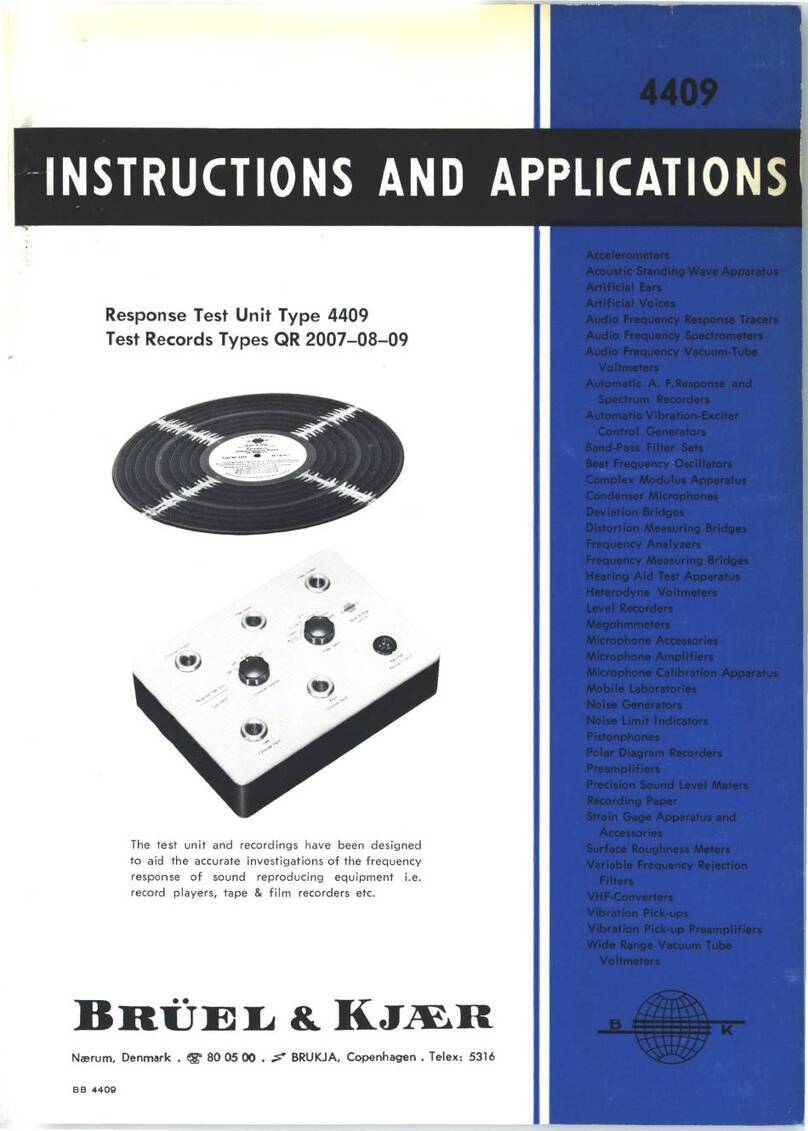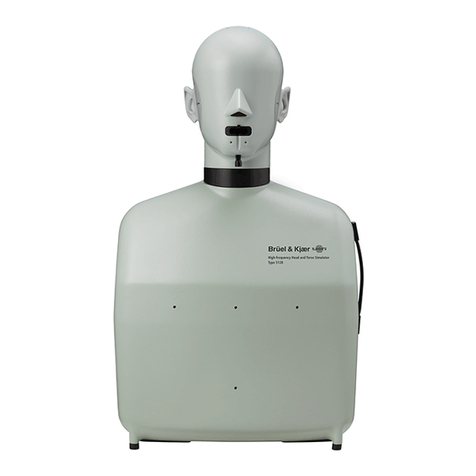Valex S800146 User manual

S800146
21.03.2017
Final dimension: A5
ATTENZIONE! Prima di usare il prodotto, leggete e comprendete le istruzioni di sicurezza e le istruzioni d’uso fornite
WARNING! Before using the product, read and understand the supplied safety instructions and operating instructions
Tester digitale
ISTRUZIONI D’USO
Istruzioni originali
Digital tester
OPERATING INSTRUCTIONS
Translation of the original instructions

- 2 -

- 3 -

- 4 -
DATI TECNICI
Display ____________________________Cristalli liquidi
Temperatura di esercizio __0-40°C (umidità relativa<75%)
Categoria _________________________ CAT II 1000V
Alimentazione ____________ 1 batteria 9V (6F22),inclusa
Dimensioni ________________________105x60x27mm
Note:
“rdg” significa “valore letto”, “dgt” significa “valore in cifre”
Precisione garantita per un anno, 23° ± 5°C, umidità
relativa<75%
TECHNICAL DATA
Display ___________________________ Liquid crystals
Operating temperature__ 0-40°C (relative humidity <75%)
Category__________________________ CAT II 1000V
Power_________________ 1 battery 9V (6F22), included
Size _____________________________105x60x27mm
Notes:
“rdg” means “reading value”, “dgt” means “digital value”
Precision guaranteed for 1 year, 23° ± 5°C, relative humidity
<75%
MISURAZIONE TENSIONE IN CORRENTE CONTINUA V
MEASURING DIRECT CURRENT VOLTAGE V
Scala
Scale
Precisione
Precision
Risoluzione
Resolution
200 mV
±(0,5%rdg+2dgt)
0,1 mV
2 V 1 mV
20 V 10 mV
200 V 100 mV
600 V ±(0,8%rdg+2dgt) 1 V
MISURAZIONE TENSIONE IN CORRENTE ALTERNATA V~
MEASURING ALTERNATING CURRENT VOLTAGE V~
Scala
Scale
Precisione
Precision
Risoluzione
Resolution
200 V ±(1,2%rdg+10dgt) 100 mV
600 V 1 V
MISURAZIONE CORRENTE CONTINUA A
MEASURING DIRECT CURRENT A
Scala
Scale
Precisione
Precision
Risoluzione
Resolution
200 µA
±(1%rdg+2dgt)
0,1 µA
2 mA 1 µA
20 mA 10 µA
200 mA ±(1,2%rdg+2dgt) 100 µA
10 A ±(2%rdg+2dgt) 10 mA
TEST DIODO E CONTINUITÀ
DIODE AND CONTINUITY TEST
Posizione
Position
Descrizione
Description
Condizioni test
Test Condition
Caduta di ten-
sione diretta
del diodo
Direct voltage
drop of the
diode
Ingresso corrente c.c.:
circa 1,5mA
Tensione inversa:
circa 2,4V
DC current input
approx.: 1,5mA
Reverse voltage:
approx. 2,4V
Se la resistenza
tra due punti é
inferiore a 70Ω
lo strumento
emette un se-
gnale acustico
If the resistan-
ce between
two points is
less than 70 Ω,
the tool emits a
sound signal
Tensione su circuito
aperto: circa 1,5V
Corrente: 0,6 mA
Voltage on open circu-
it: approx.
1,5
V
Test current: 0,6 mA

- 5 -
DICHIARAZIONE DI CONFORMITA’
La ditta indicata in etichetta dichiara sotto la
propria responsabilità che il prodotto ivi citato
è conforme ai requisiti essenziali di sicurezza e
salute contenuti nelle seguenti direttive europee:
2004/108/CE
DECLARATION OF CONFORMITY
The firm indicated on the label declares, under
its own responsibility, that the product cited there
complies with the essential health and safety
requirements contained in the following European
directives: 2004/108/EC
Persona autorizzata a costituire il fascicolo tecnico presso
The person authorized to compile the technical file is in
Valex SpA - Via Lago Maggiore, 24
36015 Schio (VI) - Italy
03.2017
Un procuratore - Attorney
SMIDERLE STEFANO
MISURAZIONE RESISTENZA Ω
MEASURING RESISTANCE Ω
Scala
Scale
Precisione
Precision
Risoluzione
Resolution
200 Ω
±(1%rdg+10dgt)
0,1 Ω
2 kΩ1 Ω
20 kΩ10 Ω
200 kΩ100 Ω
2 MΩ1 kΩ

- 6 -
i
Vi ringraziamo per averci preferito nella scelta di
questo strumento elettrico, di seguito chiamato
anche tester digitale.
ATTENZIONE! Il tester digitale è idoneo
alle seguenti misurazioni: tensioni in corrente
continua e corrente alternata, correnti continue,
correnti alternate, resistenze, temperatura,
frequenza, capacità, test diodi, test batterie e
verifica della continuità di un circuito elettrico.
Ogni altro uso è vietato.
Questo istruzioni riportano le informazioni e
quanto ritenuto necessario per il buon uso, la
conoscenza e la normale manutenzione dello
strumento. Esse non riportano le informazioni
sulle tecniche di misurazione dei circuiti e dei
componenti elettrici/elettronici; l’utilizzatore
troverà maggiori notizie su libri e pubblicazioni
specifiche o partecipando a corsi di specializ-
zazione.
COMPONENTI, PULSANTI E PRESE
Fare riferimento alla fig. A e seguenti, allegate
alle presenti istruzioni.
1 Display lcd
2 Selettore funzioni e scala
3 Presa comune COM (nera)
4 Presa V/Ω/mA/Hz (rossa)
5. Presa 10A (rossa)
6. Spia luminosa LED
7. Guscio protettivo
8. Coperchio posteriore
9. Viti
10. Batteria
11. Fusibile
12. Spina
13. Impugnatura isolata
14. Puntale metallico a punta
TRASPORTO
Per trasportare lo strumento utilizzate sempre il
suo imballo o la sua custodia (se presente) che
lo preserverà da urti, polvere e umidità, che ne
possono compromettere il regolare funzionamento.
MESSA IN SERVIZIO
Nel luogo che utilizzerete lo strumento elettrico
è opportuno considerare:
- che la zona non sia umida e sia al riparo dagli
agenti atmosferici.
- che attorno sia prevista un’ampia zona opera-
tiva libera da impedimenti.
- che vi sia una buona illuminazione.
- che la temperatura ambiente sia compresa
entro un valore indicato nei dati tecnici
- che l’ambiente non sia in atmosfera infiam-
mabile/esplosiva.
Estraete lo strumento ed i componenti e verifica-
te visivamente la loro perfetta integrità.
ISTRUZIONI PER L’USO
ACCENSIONE/SPEGNIMENTO
Per accendere ruotare il selettore (2) in una qual-
siasi posizione. Per spegnere ruotare il selettore
nella posizione “OFF”.
MISURAZIONE DELLA TENSIONE IN CORRENTE
CONTINUA
Attenzione pericolo di scossa elettrica.
1) Collegate la sonda rossa alla presa (4) “VΩ”
e quella nera alla presa “COM” (3).
2) Portate il selettore (2) nel settore V
3) Procedere alla misura.
Attenzione! Se non si dovesse conoscere il
valore di tensione, partire sempre dal valore
più alto sul selettore per poi ridurne progres-
sivamente il valore.
MISURAZIONE DELLA TENSIONE IN CORRENTE
ALTERNATA
Attenzione pericolo di scossa elettrica.
1) Collegate la sonda rossa alla presa (4) “VΩ”
e quella nera alla presa “COM” (3).
2) Portate il selettore (2) nel settore “V~”.
3) Procedere alla misura.
Attenzione! Se non si dovesse conoscere il
valore di tensione, partire sempre dal valore
più alto sul selettore per poi ridurne progres-
sivamente il valore.
MISURAZIONE DELLA CORRENTE CONTINUA
FINO A 200mA
Questo tester non è progettato per effettuare
misure di corrente alternata.
Attenzione! Con la presa VΩ (4) non supe-

- 7 -
rare mai il limite di 200mA
In caso di dubbio iniziare la misurazione nella po-
sizione “10A” connettendosi alla presa 10A (5).
1) Collegate la sonda rossa alla presa (4) “VΩ”
e quella nera alla presa “COM” (3).
2) Portate il selettore (2) nel settore “µA –mA”
iniziando sempre da mA.
3) Procedere alla misura.
MISURAZIONE DELLA CORRENTE CONTINUA
FINO A 10A
Questo tester non è progettato per effettuare
misure di corrente alternata.
Attenzione! Con la presa 10A(5) non supe-
rare mai il limite di 10A
1) Collegate la sonda rossa alla presa ‘10A’(5)
e quella nera alla presa “COM”(3).
2) Portate il selettore (2) nel settore “10A”.
3) Procedere alla misura.
Attenzione la presa è protetta da un fusibile di
protezione che potrebbe intervenire in caso di
superamento dei 10A.
MISURAZIONE RESISTENZA
1) Collegate la sonda rossa alla presa (4) “VΩ”
e quella nera alla presa COM (3).
2) Portate il selettore (2) nel settore Ω nella
scala voluta
3) Procedere alla misura.
ATTENZIONE: la misura di resistenza su un
circuito dovrà essere effettuata sempre in
assenza di energia. Non collegare mai i puntali
a sorgenti di tensione, oltre che pericoloso, lo
strumento può essere danneggiato.
TEST DI CONTINUITÀ
ATTENZIONE: il circuito su cui si intende
eseguire il test non deve essere in tensione per
non provocare gravi danni allo strumento.
1) Collegate la sonda rossa alla presa (4) “VΩ”
e quella nera alla presa COM (3).
2) Portate il selettore (2) nel settore DIODO
, CICALINA
3) Procedere alla misura.
In caso sia presente continuità nel circuito
avvertirete un suono in concomitanza con l’ac-
censione della spia LED(6).
TEST DIODI
ATTENZIONE: il circuito su cui si intende
eseguire il test diodi non deve essere in tensione
per non provocare gravi danni allo strumento.
1) Collegate la sonda rossa alla presa (4) “VΩ”
e quella nera alla presa COM (3).
2) Portate il selettore (2) nel settore DIODO
, CICALINA
3) Procedere con la misura; collegare i puntali
ai poli del diodo da testare. Leggete la caduta
di tensione direttamente sul display in mV. Se
la connessione é invertita, o la giunzione del
diodo aperta, il display mostrerà il valore “I”.
GENERATORE DI ONDA QUADRA A 50Hz
1) Collegate la sonda rossa alla presa (4) “VΩ”
e quella nera alla presa “COM” (3).
2) Portate il selettore (2) nel settore ONDA
QUADRA .
Attenzione questa è una uscita di segnale. Non
è presente una protezione per il corto circuito.
SOSTITUZIONE BATTERIE
Assicurarsi che durante l’installazione della
batteria l’apparecchio sia spento (selettore
funzioni (2) in posizione OFF). Ciò evita danni
al multimetro in caso di errato collegamento
della batteria.
Sostituite la batterie quando il simbolo
batteria appare sul display. Per la sostitu-
zione seguire le indicazioni seguenti:
- rimuovere il guscio protettivo (7)
- con l’utilizzo di un cacciavite rimuovere lo
sportello vano batteria posteriore (8).
- togliete le batteria e sostituitela.
- chiudete il coperchio dell’alloggiamento e
riavvitate le viti.
- montate il guscio protettivo.
SOSTITUZIONE FUSIBILE
La presa 10A (5) è protetta contro i sovraccarichi
da un fusibile (15) interno all’apparecchio.
In caso di intervento, ridurre la corrente e so-
stituire il fusibile con uno di pari caratteristiche
(non fornito).
Per la sostituzione seguire le indicazioni seguenti:
- rimuovere il guscio protettivo (7)
- con l’utilizzo di un cacciavite rimuovere il
coperchio posteriore (8)
- togliete il fusibile (11) guasto e sostituitelo con
uno di pari valore
- chiudete il coperchio dell’alloggiamento e
riavvitate le viti.
- montate il guscio protettivo.

- 8 -
PROBLEMI CAUSE E RIMEDI
PROBLEMA CAUSE RIMEDI
La strumento non si ac-
cende. Batteria scarica Sostituire la batteria o rivolgetevi al negoziante o ad un centro
di assistenza autorizzato. La batteria e la sua sostituzione non
sono compresi nella garanzia.
Guasto elettrico Rivolgetevi al negoziante o ad un centro di assistenza au-
torizzato.
Caratteri sul display non
leggibili o lenti nella visua-
lizzazione.
Temperatura ambiente
troppo bassa Spostare lo strumento in un ambiente con temperatura
maggiore.
Batteria scarica Sostituire la batteria o rivolgetevi al negoziante o ad un centro
di assistenza autorizzato. La batteria e la sua sostituzione non
sono compresi nella garanzia.
Non è possibile eseguire
alcune misurazioni. Fusibile guasto Sostituire il fusibile o rivolgetevi al negoziante o ad un centro
di assistenza autorizzato. Il fusibile e la sua sostituzione non
sono compresi nella garanzia.
ATTENZIONE! Se dopo aver eseguito gli interventi sopra descritti lo strumento non funziona cor-
rettamente o in caso di anomalie diverse da quelle indicate, portatelo presso un centro di assistenza
autorizzato esibendo la prova di acquisto e richiedendo ricambi originali. Fate sempre riferimento
alle informazioni riportate sull’etichetta dati tecnici.
IMMAGAZZINAMENTO
Effettuate una accurata pulizia (vedi paragrafo Ma-
nutenzione) ed utilizzate l’imballo originale per pro-
teggere lo strumento. Se prevedete di non usare lo
strumento per un lungo periodo, togliere le batterie.
Riponete lo strumento in un luogo asciutto,
privo da polveri, temperato e protetto dai raggi
solari diretti.
Al locale di rimessaggio non devono avere
accesso i bambini e gli estranei.
GARANZIA
Il prodotto è tutelato a norma di legge contro
ogni non conformità rispetto alle caratteri-
stiche dichiarate purché sia stato utilizzato
esclusivamente nel modo descritto in queste
istruzioni, non sia stato manomesso in alcun
modo, sia stato riparato da tecnici autorizzati e,
ove previsto, siano stati utilizzati solo ricambi
originali. Sono comunque esclusi materiali di
consumo e/o componenti soggetti a particolare
usura come le sonde, la batteria, il fusibile, ecc.
Consegnate il prodotto al rivenditore od ad un
centro di assistenza autorizzato, esibendo la
prova di acquisto.

- 9 -
g
Thank you for purchasing this electrical tool,
hereafter also referred to as a “digital tester”.
IMPORTANT! The digital tester can be
used to measure the following: direct and
alternating current voltages, direct currents,
alternating currents, resistance, temperature,
frequency, capacitance, diode tests, battery
tests and to check the continuity of an electri-
cal circuit. Any other use is prohibited.
These instructions contain the information
needed for the proper use, knowledge and
standard maintenance of the tool. They do not
give information on how to measure circuits and
electrical/electronic components. The user can
find more information in specialised books and
publications or by attending training courses.
COMPONENTS, BUTTONS AND INPUT JACKS
Refer to fig. A and the other figures attached to
these instructions.
1 LCD Display
2 Function and range dial
3 Common jack COM (black)
4 V/Ω/mA/Hz jack (red)
5 10A jack (red)
6 LED display
7 Protective case
8 Rear cover
9 Screws
10 Battery
11 Fuse
12 Plug
13 Insulated handgrip
14 Pointed metal probe tip
TRANSPORT
To transport the tool, always use its packaging
or case (if provided), which will protect it from
impact, dust and humidity which can compro-
mise its normal operation.
SWITCHING ON
At the location where you will use the electrical
tool, the following should be considered:
- that the area is not damp and is sheltered from
the weather.
- that the working area is sufficiently large and
free from obstacles.
- that the area is well lit.
- that the ambient temperature is between the
values listed in the technical data.
- that the environment is not in a flammable/
explosive atmosphere.
Take the tool and its components out and visually
ensure that they are in perfect condition.
INSTRUCTIONS FOR USE
SWITCHING ON/OFF
To switch on, turn the selector (2) to any po-
sition. To switch off, turn the selector to the
“OFF” position.
MEASURING DIRECT CURRENT VOLTAGE
WARNING! Risk of electric shock.
1) Connect the red probe to the “VΩ” socket (4),
and the black one to the “COM” socket (3).
2) Bring the selector (2) into the “V ” sector.
3) Take the measurement.
Warning! If you were not to know the voltage
value, always start from the highest value on
the dial and then gradually reduce its value.
MEASURING ALTERNATING CURRENT VOLTAGE
WARNING! Risk of electric shock.
1) Connect the red probe to the “VΩ” socket (4),
and the black one to the “COM” socket (3).
2) Bring the selector (2) into the “V~” sector.
3) Take the measurement.
Warning! If you were not to know the voltage
value, always start from the highest value on
the dial and then gradually reduce its value.
MEASUREMENT OF CURRENT UP TO 200mA
This tester is not designed for making alter-
nating current measurements.
Warning! With VΩ socket (4) do not exceed
the limit of 200mA
If in doubt, start measurement in the “10A”
connecting to the socket 10A (5).
1) Connect the red probe to the “VΩ” socket (4),
and the black one to the “COM” socket (3).

- 10 -
2) Bring the selector (2) into the “µA –mA” sector
always starting from mA.
3) Take the measurement.
CURRENT MEASUREMENT UP TO 10A
This tester is not designed for making alter-
nating current measurements.
Warning! With the socket 10A(5) never
exceed the limit of 10A
1) Connect the red probe to the 10A jack (5)
and the black one to the “COM” jack (3).
2) Turn the dial (2) to the “10A” selection.
3) Take the measurement.
Warning: the tester is protected by a fuse that
could intervene in case of exceeding 10A.
RESISTANCE MEASUREMENT
1) Connect the red probe to the “VΩ” jack (4)
and the black one to the “COM” jack (3).
2) Turn the dial (2) to the “Ω” on the desired scale.
3) Take the measurement.
WARNING: The circuit must always be de-
energised when taking a resistance measu-
rement. Never connect the test leads to a
voltage source; this is dangerous and could
also damage the tool.
CONTINUITY TESTS
WARNING: The circuit on which you want
to run the diode test must be de-energised to
avoid seriously damaging the tool.
1) Connect the red probe to the “VΩ” jack (4)
and the black one to the “COM” jack (3).
2) Turn the dial (2) to DIODE , BUZZER
3) Take the measurement.
You will hear a noise and the LED(6) lights up if
there is continuity in the circuit.
DIODE TEST
WARNING: The circuit on which you want
to run the diode test must be de-energised to
avoid seriously damaging the tool.
1) Connect the red probe to the “VΩ” jack (4)
and the black one to the “COM” jack (3).
2) Turn the dial (2) to DIODE , BUZZER
3) Take the measurement; connect the test leads
to the poles of the diode to be tested. Read the
voltage drop directly on the display in mV. If the
connection is inverted or the diode junction is
open, the display will read “I”.
SQUARE WAVE GENERATOR (50Hz)
1) Connect the red probe to the socket (4) “VΩ”
and the black one to the “COM” (3).
2) Turn the switch (2) in the SQUARE WAVE
sector.
Attention this is a signal output. There is no
protection for the short circuit.
BATTERY REPLACEMENT
Make sure the tool is switched off when installing
the battery (function dial (2) in OFF position).
This will prevent damage to the multimeter if the
battery is incorrectly connected.
Replace the battery when the battery symbol
appears on the display. To replace the
battery, follow the instructions below:
- using a screwdriver, remove the rear battery
compartment cover (16).
- remove the battery and replace it.
- close the compartment cover and tighten the
screws.
FUSE REPLACEMENT
The 10A socket (5) is protected against overload
by a fuse (15) inside the unit.
In case of intervention, reduce current and re-
place the fuse with one with the same features
(not supplied).
To replace the following guidelines:
- Remove the protective case (7)
- With the use of a screwdriver, remove the rear
cover (8)
- Remove the fuse (11) and replace it with one
of equal value
- Close the cover and retighten the screws.
- Mount the protective case.

- 11 -
PROBLEM, CAUSE, SOLUTION
PROBLEM COUSE SOLUTION
The tool does not
switch on Dead battery Replace the battery or contact your retailer or an authorised service
centre The battery and its replacement are not included in the
warranty.
Electrical fault Contact your retailer or an authorised service centre
Characters on the di-
splay are unreadable
or are slow to display
Ambient temperature
is too low Take the tool to a room with a higher temperature
Dead battery Replace the battery or contact your retailer or an authorised service
centre The battery and its replacement are not included in the
warranty.
It is not possible to do
any measurements. Di-
splay with frozen value.
The HOLD button was
pressed Press the HOLD button again to unblock measuring
Measurements cannot
be taken. Blown fuse. Replace the fuse or contact your retailer or an authorised service
centre. The fuse and its replacement are not included in the warranty.
WARNING! If the tool still fails to operate correctly after you have carried out the above ope-
rations, or in the event of faults other than those described above, take it to an authorised service
centre showing proof of purchase, and ask for original spare parts. Always provide the information
shown on the technical data label.
STORAGE
Thoroughly clean the whole tool (see Maintenan-
ce) and use the original packaging to protect it. If
you plan on not using the tool for a long period
of time, remove the batteries.
Store the tool in a dry place, free of dust, tempe-
rate and protected from direct sunlight.
Keep children and unauthorised personnel out
of the storage room.
WARRANTY
The product is protected by law against all non-
conformities with regard to its stated characte-
ristics, provided that it has been used solely in
the way described in this user’s instructions,
it has not been tampered with in any way or
repaired by unauthorised personnel and, where
necessary, only original spare parts have been
used. However, consumer materials and/or parts
subject to wear such as the probes, the battery,
the fuse, etc. are excluded from the warranty.
Take the product to the retailer or an authorised
service centre, showing proof of purchase.

Table of contents
Languages:
Popular Test Equipment manuals by other brands

Baker Hughes
Baker Hughes Druck DPI 620 Genii Safety Instructions and User Guide
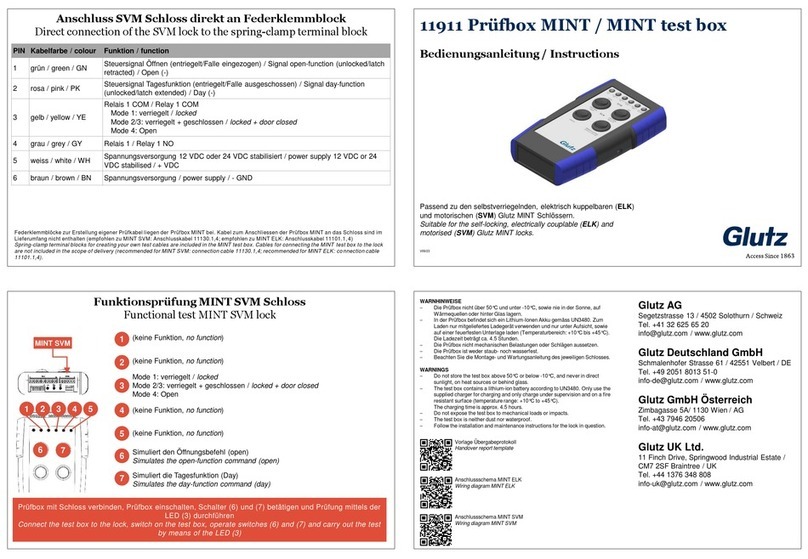
Glutz
Glutz MINT instructions
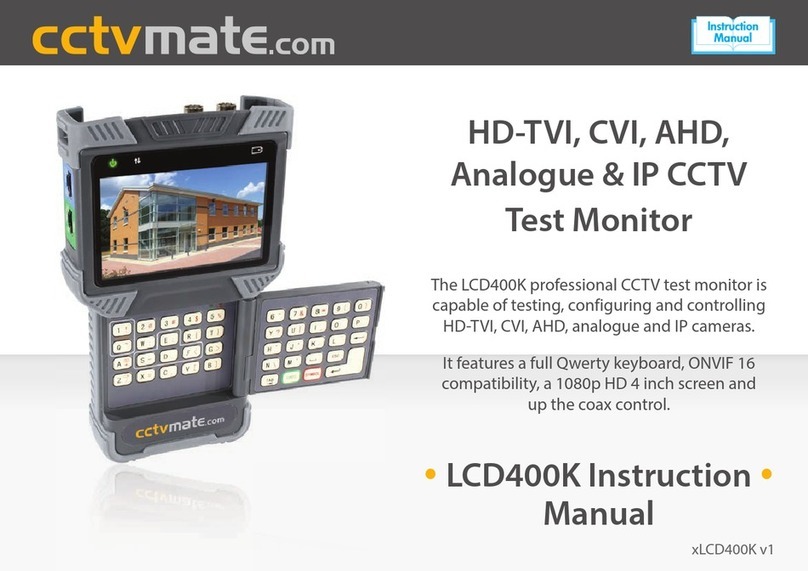
CCTVMATE.COM
CCTVMATE.COM LCD400K instruction manual
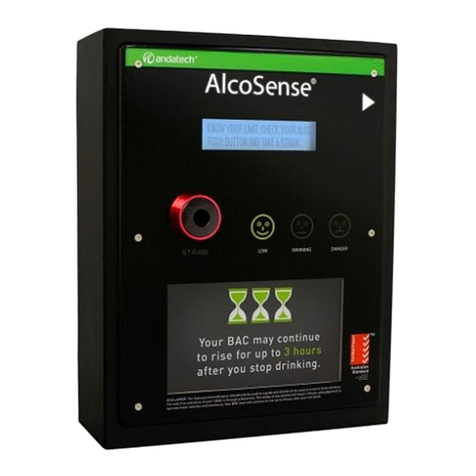
Andatech
Andatech AlcoSense SOBERPOINT 3 user manual
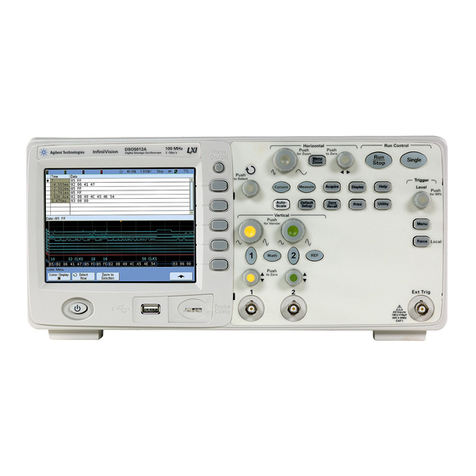
Agilent Technologies
Agilent Technologies 54621A user guide
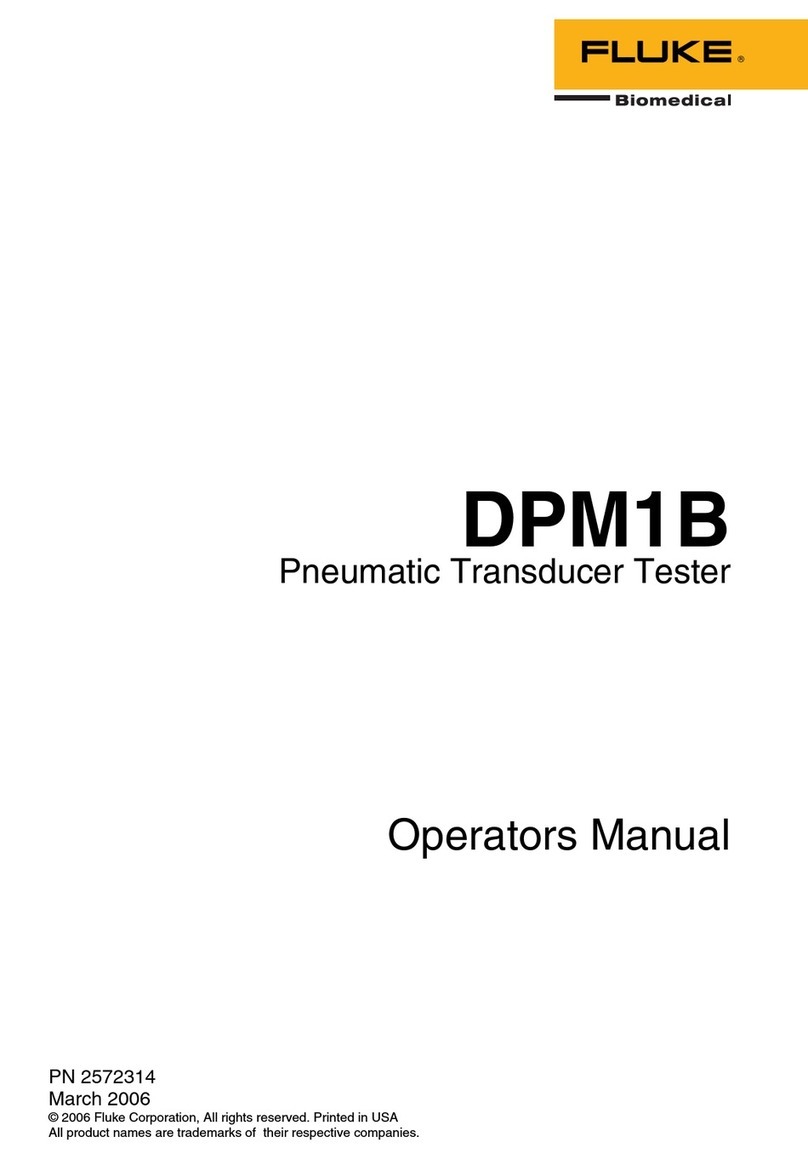
Fluke Biomedical
Fluke Biomedical DPM1B Operator's manual
